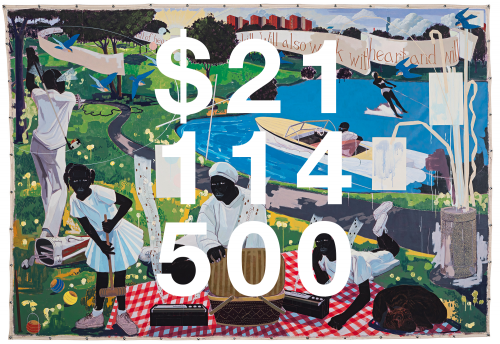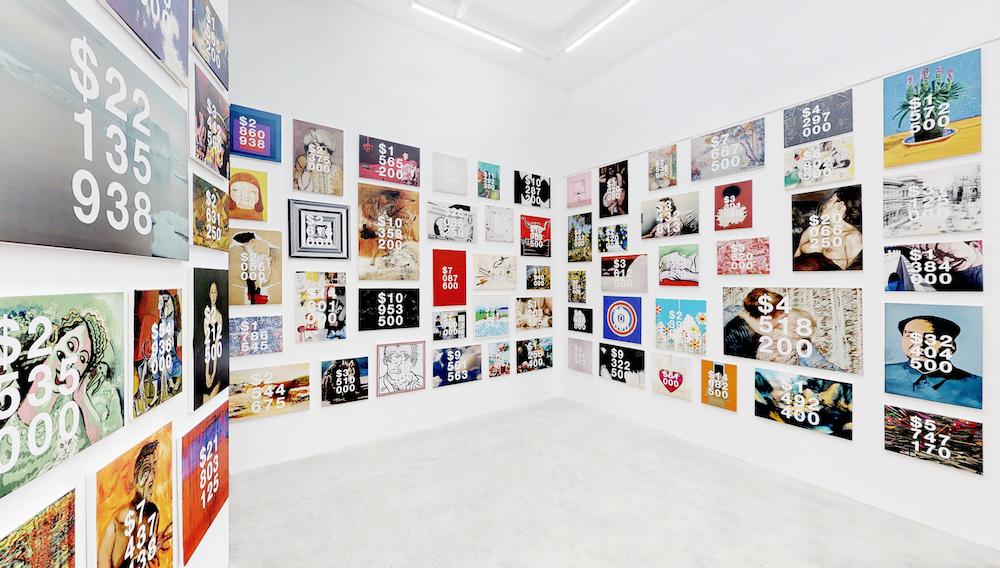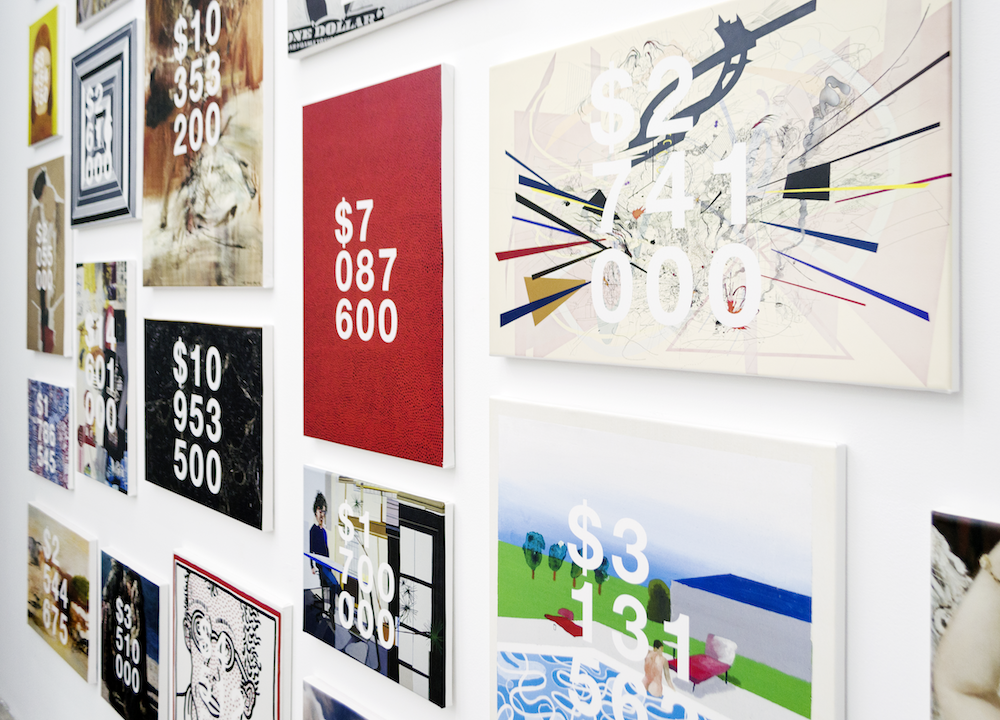Market
An Artist Pirated 10 Years Worth of Sotheby’s Auction Data to Expose the ‘Manipulation and Secrecy’ of the Art Market
Paolo Cirio is selling digital reproductions of the lots for 1/100,000th of the price they went for on the block.

Paolo Cirio is selling digital reproductions of the lots for 1/100,000th of the price they went for on the block.

“Auction houses are rigged by manipulation and secrecy, therefore everyone should pirate them and exploit their inflated prices.”
So reads the mission statement of “Art Derivatives,” a new project by Italian artist Paolo Cirio that thumbs its nose at the rampant speculation of the art market.
Cirio scraped over 100,000 auction records from the past ten years of Sotheby’s sales and is now offering digital reproductions of the auction lots for 1/100,000th of the price they sold for.
Overlaid in bold type on each of his artworks is the price the actual work realized at auction (or, in the case of those that didn’t sell, the pre-sale estimate).

A derivative of Kerry James Marshall’s painting Past Times (1997).
For instance, if you wanted to buy Kerry James Marshall’s landmark 1997 canvas, Past Times, but didn’t have the $21 million to outbid Diddy at Sotheby’s in 2018, you can now buy a hi-res digital facsimile for just $211.
Print it out, put it on your wall, and it’ll be like you’re living with the real thing. Sort of.
Okay, it won’t actually be like the real thing. But that’s not the point. The point, Cirio tells Artnet News, is to draw attention to the inequities of the auction market—and, eventually, to create a submarket that undermines them.
“The project is a provocation but it aims to promote regulation,” Cirio says.

An installation of Paolo Cirio’s “Art Derivatives” project at NOME Berlin, 2020. Courtesy of the artist.
Each derivative, as he’s calling his works, comes with a certificate of authenticity and a contract stipulating that it can’t be resold within 5 years. After that period, if you want to resell, you can only pass it off for at least five times the price paid on Art-Derivatives.com.
The price is multiplied by 10 if the artwork on which it is based—Marshall’s Past Times, in the example above—is resold at auction for a lesser price than it originally went for.
So when the price of a real artwork goes down, the cost of its derivative goes up.
“By selling derivative works for a small fraction of the original price, financial speculation in the art market is democratized and the values of the artworks are distributed to everyday investors,” the artist explains on the project’s website.
“As a form of financial activism, the art auction market is shorted by borrowing its assets and selling them as future derivatives for a lower amount.”

An installation of Paolo Cirio’s “Art Derivatives” project at NOME Berlin, 2020. Courtesy of the artist.
The genesis of the project goes back four years, when Cirio began building the digital data-scraping tool he used to pull Sotheby’s information. It’s a skill he’s deployed in the name of art numerous times.
In 2013, for an artwork called Loophole for All, Cirio hacked into the Cayman Islands government registry and reveal 200,000 offshore accounts. The year prior, with Persecuting US, he created a platform that scored one million Americans on their political affiliation, based on data appropriated from Twitter.
Flash forward to 2020 and so far, Cirio has sold $500 worth of derivatives. It’s not a huge number, but it’s more than the artist tends to make at art fairs, he says. He’s not sure if Sotheby’s is aware of the project yet.
“The problem is not the market itself,” the artist says. “It’s who sells overpriced rotten products while crushing everyone else offering something better.”